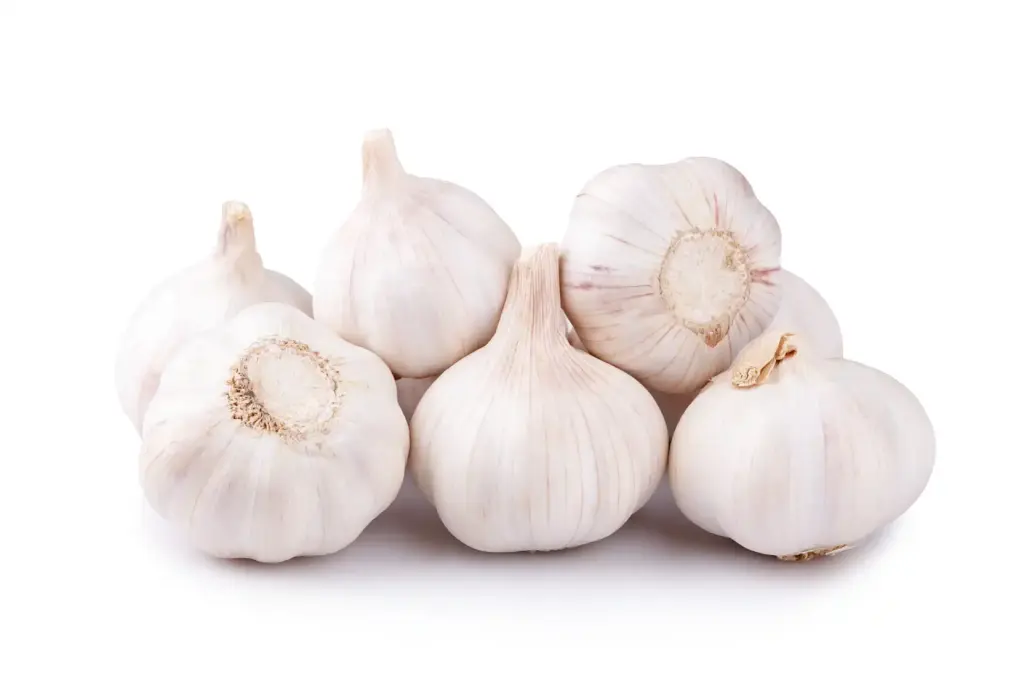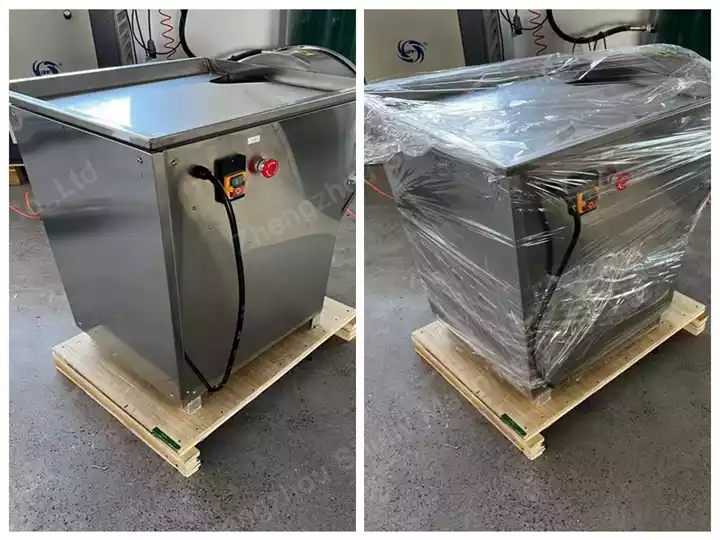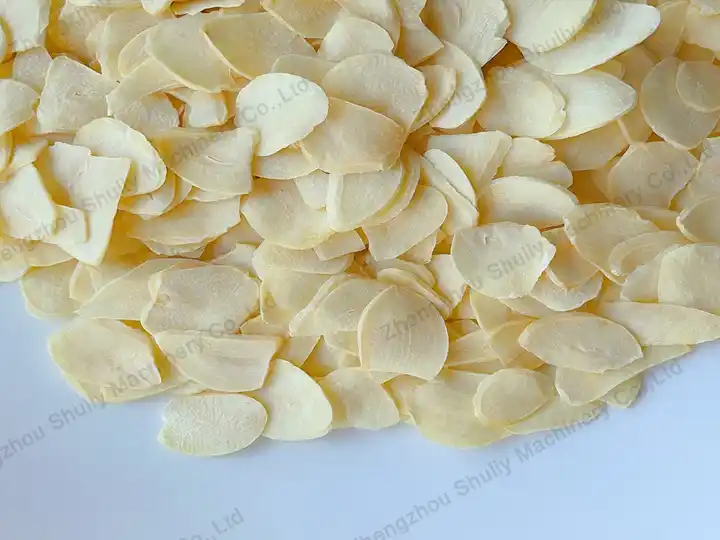Sarımsak Dilimleyici Almaya Değer mi?
Bir sarımsak dilimleyici hızlı ve verimli bir şekilde sarımsağı ince dilimlere ayırabilir. Bu küçük makineye giderek daha fazla ilgi gösteriliyor ve merak ediliyor — gerçekten alınmaya değer mi? Hangi durumlarda uygundur? Daha yakından bakalım.

SL-300 modelini örnek alalım. Bu makinenin gücü 0.75 kW olup saatte yaklaşık 300 kg sarımsak işleyebilir. Ölçüleri 100×73×95 cm ve sadece 75 kg ağırlığındadır, bu da küçük ve orta ölçekli gıda işleme tesisleri, restoran mutfakları ve tarım ürünleri işleme için idealdir.
Ancak, alınmaya değer olup olmadığı, sadece özelliklerine bağlı değildir. Makineyi tanıttıktan sonra, yatırım getirisi analizini de ekleyeceğim, böylece okuyucular ekonomik değerini daha iyi anlayabilir ve iyi bir yatırım olup olmadığına karar verebilir.
Bir Sarımsak Dilimleyici Makinesi Nasıl Çalışır
Makine çalışırken, sarımsak besleme girişinden içeri alınır. İçeride, yüksek hızlı bıçaklar sarımsağı eşit şekilde ince dilimlere ayırır. Dilimlenmiş sarımsak çıkıştan çıkar ve doğrudan kurutma, kurutma veya paketleme işlemlerine geçebilir. Tüm süreç yüksek otomasyonludur.
Sarımsak Dilimleyici Satın Almanın Avantajları
Zaman ve İşgücü Tasarrufu
Manuel dilimleme saatte sadece birkaç kilogram üretirken, makine yüzlerce kilogram işleyebilir, bu da verimliliği büyük ölçüde artırır.
Düzenli Dilimler ve Stabil Kalite
Düzenli kalınlık görünümü iyileştirir ve kurutma veya kızartma sırasında tutarlı ısıtmayı sağlar, ürün kalitesini korur.
Çok Amaçlı Tasarım
Sarımsak dışında, dilimleyici zencefil, soğan, patates, havuç, lotus kökü ve diğer malzemeleri de işleyebilir, çeşitli işleme ihtiyaçlarını karşılar
Kullanımı ve Temizliği Kolay
Kompakt tasarım, basit kullanım, kolay sökme ve yıkama, düşük bakım maliyetleri ile.
Geniş Uygulama Alanı
Ev atölyeleri, restoran mutfakları veya günlük sarımsak kullanan büyük gıda işleme tesisleri için uygundur. Üretim ihtiyaçlarına göre uygun modeli seçebilirsiniz.
Güçlü motor
Özellikle fabrikamız tarafından geliştirilmiş düşük enerji tüketimli yüksek kaliteli bir motor kullanmak, 1000 saatten fazla sürekli çalışma sağlar.

Kimler Sarımsak Dilimleyici Almalı?
Gıda İşleme Tesisleri / Büyük Ölçekli Sarımsak İşleyiciler
Sarımsak işleme, kurutulmuş sarımsak dilimleri yapma, sarımsak paketleme veya baharat üretimiyle ilgileniyorsanız ve günlük büyük miktarlarda işlem yapmanız gerekiyorsa, sarımsak dilimleyici idealdir. Bu makineler saatte yaklaşık 300 kg sarımsak işleyebilir, gıda sınıfı paslanmaz çelik kullanır, dilim kalınlığı ayarlanabilir ve homojen dilimler sağlar. Yüksek verimlilik ve tutarlı kalite gerektiren endüstriyel ölçekli operasyonlar en çok fayda sağlar.
Restoran Zincirleri / Merkezi Mutfaklar
Günlük sarımsak kullanan orta ve büyük restoran zincirleri, oteller veya merkezi mutfaklar için, dilimleyici işçilik maliyetlerini önemli ölçüde azaltabilir ve zaman kazandırabilir, aynı zamanda dilimlerin homojen olmasını sağlar. Gıda fabrikasından daha küçük ölçekli olsa bile, günlük onlarca kilogram işliyorsanız, düşünmeye değer.
Tarım İşletmeleri / Kooperatifler / Sarımsak Üreticileri
Eğer bir çiftlik sahibiyseniz veya sarımsak yetiştiriciliği kooperatifinin bir parçasıysanız ve yarı mamul ürünler (örneğin sarımsak dilimleri, kurutulmuş sarımsak dilimleri veya sarımsak tozu) üretmek istiyorsanız, dilimleyici mantıklı bir seçimdir. Bu, dikim, işleme ve paketlemeyi entegre etmenize olanak tanır, verimliliği ve ürün kalitesini artırır, bu da karınızı yükseltebilir.

Bir Sarımsak Dilimleme Makinesi Alırken Dikkate Alınacak Faktörler
Yukarıdaki gruplara ait olsanız bile, şu noktaları göz önünde bulundurun:
1. Üretim İhtiyaçları
Günde birkaç kilogram sarımsak işliyorsanız, büyük bir dilimleyici maliyetli olabilir. Manuel dilimleme veya küçük bir makine daha ekonomik olabilir.
2.Alan ve Altyapı
Makinenin boyutu, ağırlığı ve gücü (örneğin, SL-300 için 0.75 kW) dikkate alınmalı. Atölyenize veya mutfağınıza uygun olup olmadığını kontrol edin.
3.Maliyet ve Getiri
Satın alma, bakım, elektrik, su (temizlik gerekiyorsa), eğitim ve tamir maliyetlerini içerir. Bu maliyetleri, işgücü tasarrufu, verimlilik artışı ve ürün kalitesini iyileştirme avantajlarıyla karşılaştırın.
4. Temizlik ve Hijyen
Gıda işleme ekipmanları hijyen standartlarına uygun olmalı, temizliği kolay olmalı ve dayanıklı paslanmaz çelik kullanılmalı. Sarımsak dilimleyici, gıda sınıfı paslanmaz çelik kullanır ve temizliği kolaydır.
5. Çok Yönlülük
Birden fazla kök ve yumru sebzeleri (örneğin patates, soğan, zencefil) işleyebilen dilimleyici, daha geniş kullanım alanı ve daha yüksek yatırım değeri sağlar. Bu makine çeşitli kök ve blok sebzeleri için uygundur.

Sarımsak Dilimleyici Yatırım Getirisi Analizi – ROI
Günde 1 ton sarımsak işleme temel alınarak hesaplayalım. Aşağıda dikkate almanız için kabaca bir referans tablosu bulunmaktadır:
| Kalem | Manuel Dilimleme | Sarımsak Dilimleyici (Model SL-300) kullanımı | Fark / Tasarruf |
|---|---|---|---|
| Günlük İşleme Kapasitesi | 1000 kg | 1000 kg | — |
| Gerekli İşgücü | 12 işçi | 1 işçi | 11 işçiye tasarruf |
| Günlük İşçi Ücreti | $16.7 | $16.7 | — |
| Günlük Toplam İşçilik Maliyeti | $200 | $20.8 | Günlük $179.2 / tasarruf |
| Makine Gücü | — | 0.75 kW | — |
| Güç Tüketimi (8 saat) | — | 6 kWh | ≈ $0.83 / gün |
| Bakım ve Sarf Malzemeleri | — | $6.9 / gün | — |
| Toplam İşletme Maliyeti / Gün | $200 | ≈ $28.5 | ≈ $171.5 / gün tasarruf |
| Makine Fiyatı | — | $1,250–$1,390 | — |
| Geri Ödeme Süresi | — | $1,320 ÷ $171.5 ≈ 8 gün | Yaklaşık 1 haftada geri ödeme |
| Aylık Tasarruflar (25 çalışma günü) | — | — | ≈ $4,287 / ay |
| Ek Faydalar | Düzensiz dilimler, düşük verimlilik | Düzenli kalınlık, daha yüksek ürün kalitesi | Daha iyi görünüm ve katma değer |
Günde1 ton sarımsak işlenirken, bir sarımsak dilimleyici8 günde kendini amorti eder, ardından saf kar sağlar.
Makine, yalnızcaişçilik maliyetlerini önemli ölçüde azaltmakla kalmaz, aynı zamandadilim kalitesini ve işleme verimliliğini artırır, bu da onuakıllı bir yatırımyapar ve hızlı geri dönüş ile uzun vadeli yüksek kazanç sağlar.
Satın Almalı Mı?
Sadece ara sıra pişiriyorsanız ve az miktarda kullanıyorsanız, ev tipisarımsak dilimleyiciyeterlidir.
Ancak, büyük miktarda sarımsak işliyorsanız veya gıda işleme sektöründe çalışıyorsanız, yüksek verimli ve dayanıklı bir sarımsak dilimleyici kesinlikle yatırım etmeye değerdir.
